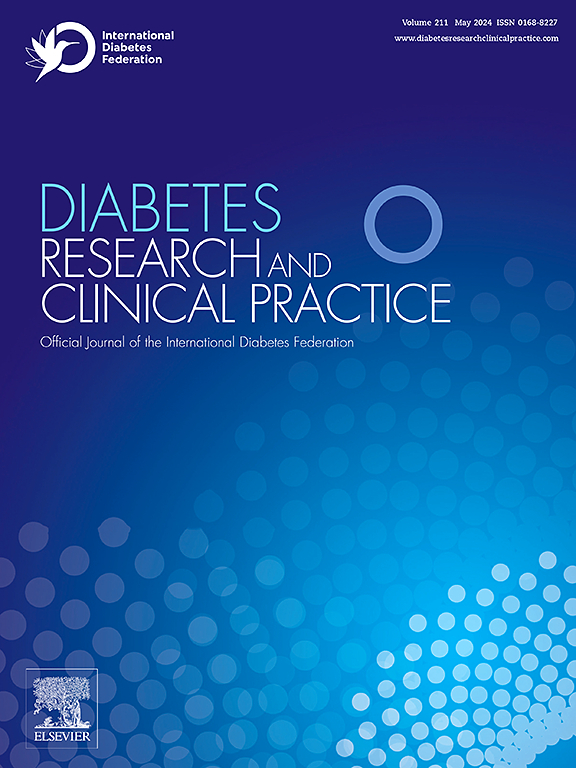Metformin adherence is associated with lower risk of osteoporotic fracture among patients with advanced type 2 diabetes
IF 6.1
3区 医学
Q1 ENDOCRINOLOGY & METABOLISM
引用次数: 0
Abstract
Aims
To evaluate whether adherence to concurrent metformin (MET) therapy is associated with a reduced risk of fractures among patients with type 2 diabetes mellitus (T2DM).
Methods
This retrospective cohort study used Taiwan’s nationwide claims data from 2014 to 2020 to identify patients aged ≥50 years with T2DM who initiated second-line oral antidiabetic therapy while continuing MET. Patients with a prior history of fractures were excluded. MET adherence was defined as a medication possession ratio >40 % and a refill gap ≤90 days. Fractures were identified through inpatient and outpatient claims using specific diagnosis and procedure codes related to fracture treatment and surgical intervention. Propensity score matching (1:1) was used to balance baseline characteristics, and competing risk regression was applied to estimate fracture risk, accounting for the competing risk of death.
Results
A total of 76,022 patients were included (38,011 per group). MET adherence was significantly associated with a reduced risk of all-site fractures (adjusted subdistribution hazard ratio[aSHR] = 0.76; 95 % CI: 0.69–0.83; P < 0.001), with consistent effects across fracture sites. No additional benefit was observed with concurrent use of DPP4i or SGLT2i.
Conclusions
MET adherence was associated with lower fracture risk in older adults with T2DM, highlighting its potential role in fracture prevention.
二甲双胍依从性与晚期2型糖尿病患者骨质疏松性骨折风险降低相关。
目的:评估2型糖尿病(T2DM)患者同时接受二甲双胍(MET)治疗是否与骨折风险降低相关。方法:本回顾性队列研究使用台湾2014年至2020年的全国索赔数据,识别年龄≥50 岁的T2DM患者,这些患者开始了二线口服降糖治疗并继续进行MET治疗。既往有骨折史的患者被排除在外。MET依从性定义为药物持有率bbb40 %,补药间隔≤90 天。骨折是通过住院和门诊病人的索赔来确定的,使用特定的诊断和与骨折治疗和手术干预相关的程序代码。倾向评分匹配(1:1)用于平衡基线特征,竞争风险回归用于估计骨折风险,考虑死亡竞争风险。结果:共纳入76022例患者(每组38011例)。MET依从性与全部位骨折风险降低显著相关(调整后亚分布风险比[aSHR] = 0.76;95 % ci: 0.69-0.83;P 结论:MET依从性与老年T2DM患者骨折风险降低相关,突出了其在骨折预防中的潜在作用。
本文章由计算机程序翻译,如有差异,请以英文原文为准。
求助全文
约1分钟内获得全文
求助全文
来源期刊

Diabetes research and clinical practice
医学-内分泌学与代谢
CiteScore
10.30
自引率
3.90%
发文量
862
审稿时长
32 days
期刊介绍:
Diabetes Research and Clinical Practice is an international journal for health-care providers and clinically oriented researchers that publishes high-quality original research articles and expert reviews in diabetes and related areas. The role of the journal is to provide a venue for dissemination of knowledge and discussion of topics related to diabetes clinical research and patient care. Topics of focus include translational science, genetics, immunology, nutrition, psychosocial research, epidemiology, prevention, socio-economic research, complications, new treatments, technologies and therapy.
 求助内容:
求助内容: 应助结果提醒方式:
应助结果提醒方式:


